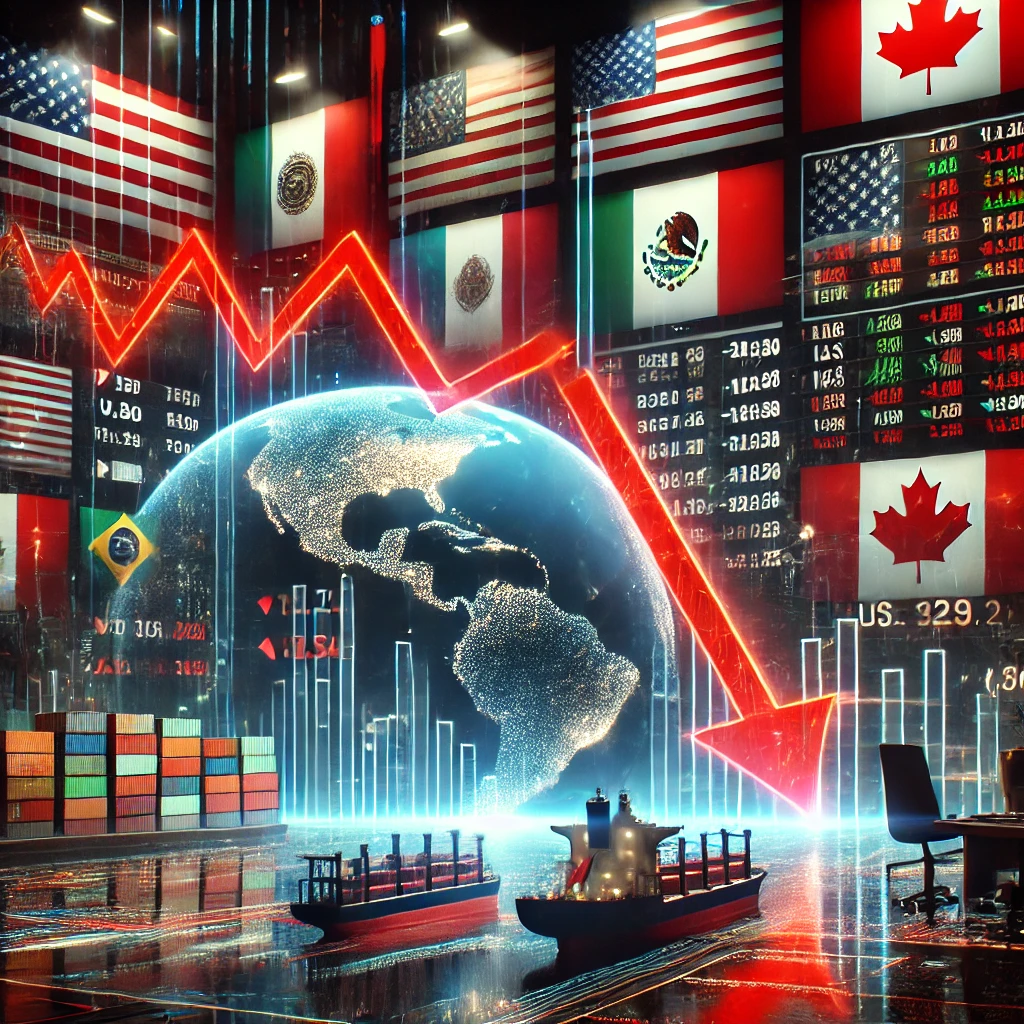Understanding the New Tariffs
The global trade landscape has taken a dramatic turn as the U.S. has imposed:
- 25% tariffs on imports from Mexico
- 25% tariffs on imports from Canada
- 10% tariffs on imports from China
These measures, effective February 4, 2025, mark a new phase of trade tensions. But how significant are these changes? Let’s analyze the impact.
Why This Trade War is One-Sided
Trade data highlights the disproportionate effects:
- Mexico and Canada depend heavily on the U.S., with 78% and 77% of their total exports directed toward the U.S.
- Meanwhile, the U.S. exports to Mexico and Canada only account for 16% and 17% of its total exports.
- U.S. exports to these nations (~$320B and ~$360B, respectively) make up less than 2.5% of U.S. GDP, but they represent 20-30% of Canada and Mexico’s GDP.
This creates a lopsided situation where Canada and Mexico face greater economic strain, but the U.S. is not completely immune either.
The China Factor: The Real Wildcard
The 10% tariff on China is a major variable. Here’s why it matters:
- China is likely to retaliate, leading to higher consumer prices in the U.S. for essential goods.
- The timing is crucial, as DeepSeek—a Chinese AI startup—has disrupted the AI landscape, raising concerns about technological competition.
- The U.S. is already investigating whether DeepSeek used restricted Nvidia AI chips, which could lead to more trade restrictions.
Potential Tech Stock Impact
The combination of a trade war and potential chip bans could severely impact technology stocks, particularly those reliant on global supply chains. U.S. officials are treading carefully with their comments on chip bans and the DeepSeek situation, signaling that the sector is in uncertain territory.
The Long-Term Economic Impact
If these tariffs persist for more than a year, we anticipate:
- A 2% decline in U.S. economic output per year through 2026.
- Sustained high interest rates until at least Q3 2025.
- Minimal relief from lower oil prices, as crude oil would need to drop 80% to ~$15 per barrel to offset inflationary effects.
The Bigger Risk: BRICS Tariffs
An even greater concern is Trump’s threat to impose 100% tariffs on BRICS countries, which could include more than 30 nations.
If enacted, the average U.S. tariff rate would rise to ~22%—more than 5 times the historical average, significantly impacting global trade.
What This Means for Investors
At Riddhi Siddhi Share Brokers, we believe that while you cannot control the market, you can react to market changes strategically.
How to Navigate the Coming Volatility
- Prepare for Market Swings – Increased tariffs will bring market volatility, which can be a trading opportunity.
- Diversify Investments – Focus on sectors resilient to trade disruptions, such as domestic infrastructure, energy, and select technology stocks.
- Monitor Policy Developments – Government actions will have direct implications on forex, commodities, and equity markets.
Final Thoughts
Trade wars create uncertainty, but for the informed investor, volatility presents opportunities. Stay ahead of market changes and position your portfolio wisely.
Stay Ahead with Riddhi Siddhi Share Brokers
🔗 Visit: www.riddhisiddhisharebrokers.com
📢 #RiddhiSiddhiShareBrokers #TradeWar #StockMarket #Investment #TradingOpportunities #MarketVolatility #Finance
📜 Disclaimer:
Investing in the stock market is subject to market risks. This content is for informational purposes only and does not constitute financial, investment, or trading advice. Past performance is not indicative of future results. Riddhi Siddhi Share Brokers is not responsible for any direct or indirect losses arising from investment decisions based on this article. Please consult a SEBI-registered financial advisor before making any investment decisions.

